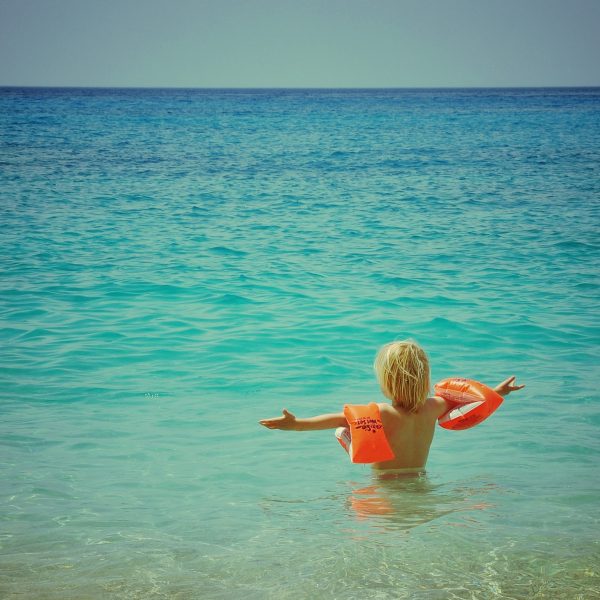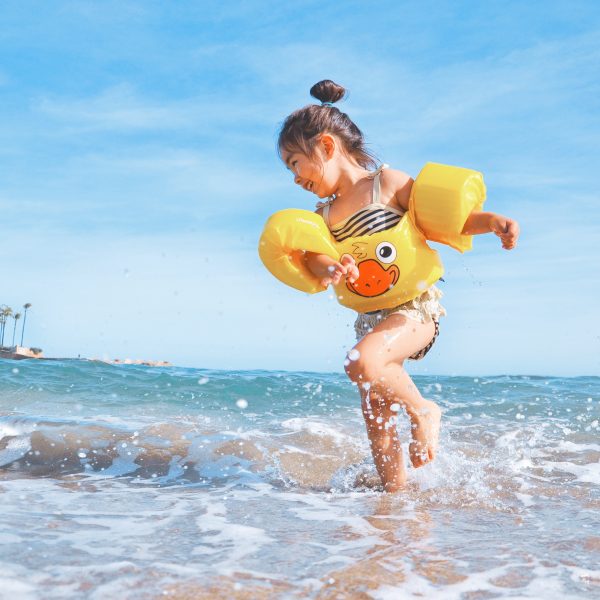ECEC and surf life saving combine to keep children safe

In 2018/19, nearly 250 people lost their lives in Australia’s waterways. For early childhood education and care (ECEC) professional and surf lifesaver, Louise Lambeth, this statistic is all too real.
Ms Lambeth wrote ‘Annie and the Waves’ in 2012, just before going on tour as a Surf Life Saving NSW ‘Beach to Bush’ presenter, educating country primary school children on how to stay safe when they visit the beach.
Sadly, in 2014, Annie’s story became real, when Ms Lambeth’s surf club was involved in a search and rescue mission which all too soon became a search and recovery. A five-year-old boy drowned at Pearl Beach on the NSW Central Coast.
“The components of risk were exactly the same that I had written in my story two years earlier…a momentary lapse in supervision, a young child on the water’s edge, a surging wave that swept him off his feet and into the deep water. The difference was that in my story, there were strategies in place that ensured a safe outcome,” Ms Lambeth said.
It was then that she knew publishing ‘Annie and the Waves’ had to be a priority. “From that moment on I was determined to discover how to publish a book … it was a huge learning curve but in November 2018, Annie was published,” she added.
We spoke with Ms Lambert recently to learn more about some of the common misunderstandings about staying safe in the surf, and how Annie’s story can help people from a variety of backgrounds and ages to enjoy the beach safely.
Common misunderstandings
The biggest misunderstandings in surf safety are caused, Ms Lambeth said, by “our lack understanding of the surf environment, and lack of awareness about the risks”.
There are a number of safety strategies which can be used before and during a beach visit to ensure safety, such as:
Plan before you go to the beach:
- Not all beaches are the same
- Consider the water ability of your family/friends when choosing which beach to go to
- Surf Life Saving Australia’s BeachSafe provides information about every Australian beach and safety advice that can help you to find a suitable beach.
When you are at the beach:
- Swim between the flags. If a surf lifesaver can see you, they can save you!
- Remember there are different kinds of waves, some are safer than others
- Don’t be complacent, ocean conditions can change very suddenly
- Parents and caregivers should always supervise children.
Staying safe at the beach:
FLAGS is a great way to remember how to stay safe at the beach:
F: Find the flags and swim between them:
A: A patrolled beach is the safest place to swim, our red and yellow flags are placed in the
safest area and continually monitored.
L: Look for the signs: Beaches will have signs on their access points that will tell you about the conditions and dangers at each beach.
A: Ask a lifesaver: Every surf lifesaver knows their own beach and we also love to chat with our beach goers so please come and ask us about safety at our beach!
G: Get a friend to swim with you It is never ok to go into the water on your own, no matter how skilled you are! Swim with a friend as they can get help if you need it!
S: Signal for help! If you need help in the water, stay calm (don’t panic) and raise your arm to show the lifesavers you need help in the water!
Supporting children with additional needs, and those from non English speaking backgrounds
Ms Lambeth said one of her goals, in bringing Annie’s story to life, was to make sure it was as accessible as possible to as many children as possible, including:
- People from culturally and linguistically diverse backgrounds, through the use of books simple words and engaging illustrations by Carissa Harris which are helpful in explaining beach safety
- Children with dyslexia. The font and choice of matt paper for the book was chosen to be dyslexia friendly
- Children with vision impairment or a text disability. An audio version is being made especially for them
- Children with autism spectrum disorder (ASD) who are 160 per cent more likely to drown than a child not on the spectrum. Reading about surf safety in a child’s own home or school before coming to the beach will help to provide a pathway for transitioning to the beach environment
There are many reasons why individuals may not be able to access surf safety programs, including location, access to transport, culture, cost or other challenges.
“I would love for all Australian children to have access to read ‘Annie and the Waves’, in their home, a local library, their childcare their school,” Ms Lambeth said.
To purchase a copy of Annie and the Waves, please see here. For more information on staying safe at the beach, see here.
Popular

Quality
Practice
Provider
Research
Workforce
Honouring the quiet magic of early childhood
2025-07-11 09:15:00
by Fiona Alston

Practice
Provider
Quality
Research
Workforce
New activity booklet supports everyday conversations to keep children safe
2025-07-10 09:00:16
by Fiona Alston

Quality
Practice
Provider
Workforce
Reclaiming Joy: Why connection, curiosity and care still matter in early childhood education
2025-07-09 10:00:07
by Fiona Alston












